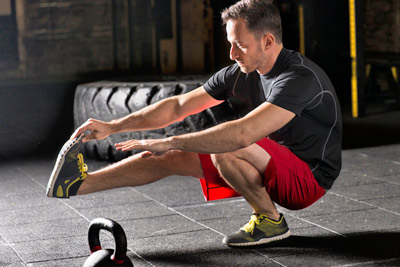 At XSport, our priority is helping you be fit and stay fit. If you stick with strength training for the long term, you’ll need to advance your routine to get the best results—here’s how.
At XSport, our priority is helping you be fit and stay fit. If you stick with strength training for the long term, you’ll need to advance your routine to get the best results—here’s how.
Let’s start by understanding when it’s the right time to advance. When you were at a beginner level, you needed to consistently strength-train for about 6 months before taking on more intermediate level progressions.
After a number of months of adding weight and reps, it typically becomes clear that you are ready for more. Now it’s time to tackle some advanced exercises to add variety and intensity to your workouts.
Here are some signs that it’s time to progress your routine:
- Your workout isn’t challenging any more (it needs to be hard work!)
- Your heart rate is staying low (congrats, you’ve adapted!)
- You are feeling bored and/or distracted (need something new!)
- Your body isn’t changing anymore (get off that plateau!)
The beauty of being consistent with strength training at the gym is how you become accustomed to seeing and feeling the physical benefits of improvement. Typically, you’ll make the most gains during the first few months of your workouts. That’s okay.
You can keep your body guessing and growing for many years. Your goals should be:
- Always work on your form—introduce one advanced move at a time
- Increase volume with new exercises consistently, like when you were a beginner
- Work with progressive variation to your standard exercises
- Continue to build muscle through recovery (days off are your growth days)
Advanced Exercises to Progress Your Workouts
We’re focusing on more advanced versions of two classic, compound exercises that you should be well familiar with: the squat and the deadlift. Progress to these when you’re ready to add variety and amp up the intensity of your basic workouts.
Squats:
Negative Squats. The negative term refers to the timing of the phase of the exercise. With a squat, this is the downward motion. Slowing down as you bend your knees and lower your body is the key here. If you normally lower to a count of 2, make it 4. Then pause a count at the bottom. You’ll feel the burn.
Bodyweight Pistol Squats. With these single-leg squats, the goal is to get all the way down to the ground and back up, on one leg! Anytime you take an exercise from two legs to one leg, it’s going to be at least twice as challenging. But adding in the range of motion here is pretty brutal. Start learning these by sitting on box or bench behind your bottom, and getting up on one foot.
Deadlifts:
Romanian Deadlift. Regular deadlifts start by lifting weight up from the floor, but this variation starts with the weight at the top with you in a standing position. You’ll lower it down and pull back up again each rep. Know that the lowering down is the most taxing movement, and the riskiest. So be sure your form is correct, especially the spine.
Single Leg Deadlifts. These are just what they sound like—a deadlift performed on one leg. It makes sense to learn these as a body weight exercise because of your need for balance and coordination. You might progress to dumbbells or kettlebells when steady. Practice these with your raised foot lightly resting on a box or bench behind you for stability.
Looking for additional direction on how to progress your workout? Click here to request a Free Personal Training session for more tips and tricks on how to reach your fitness goals.


